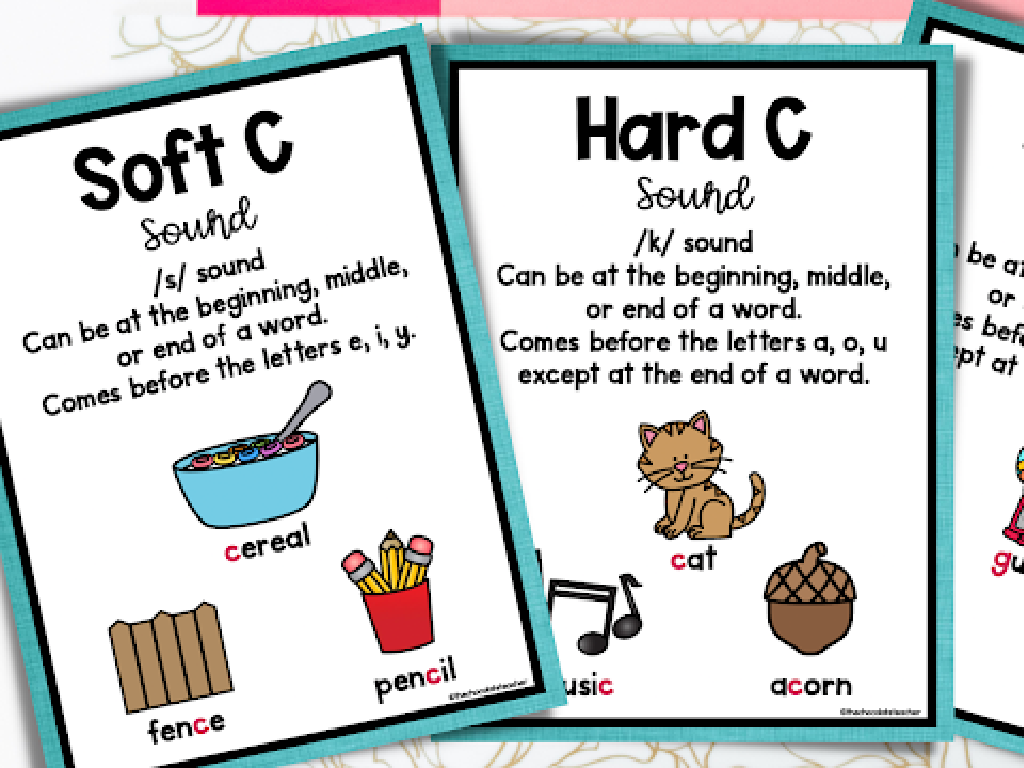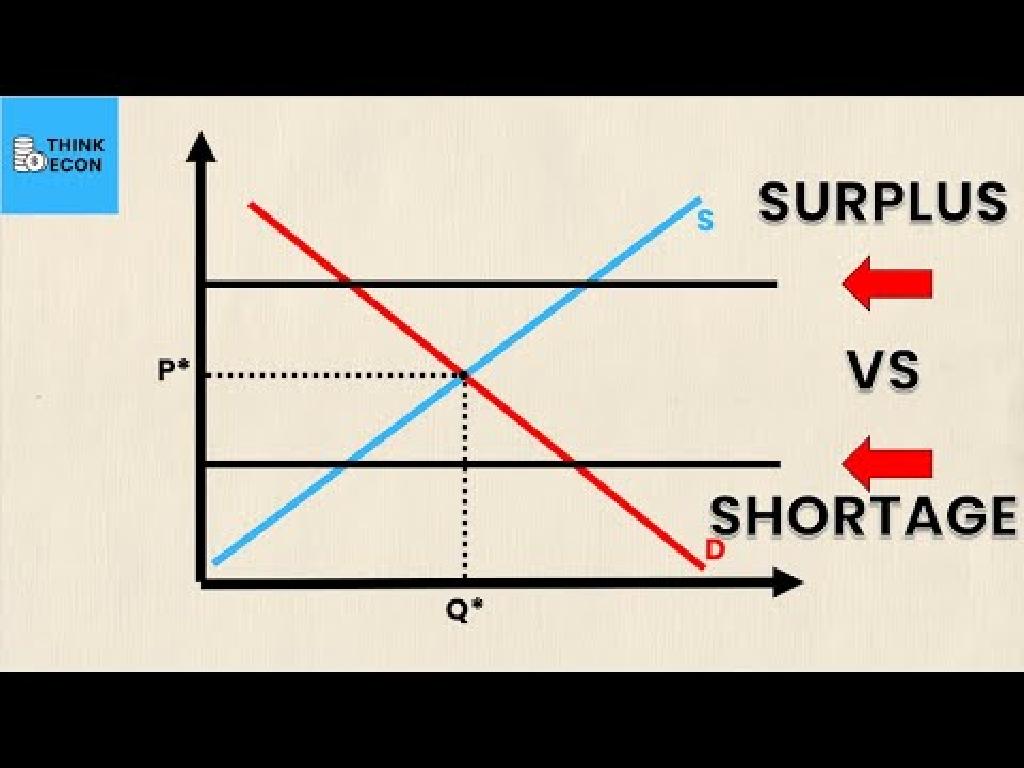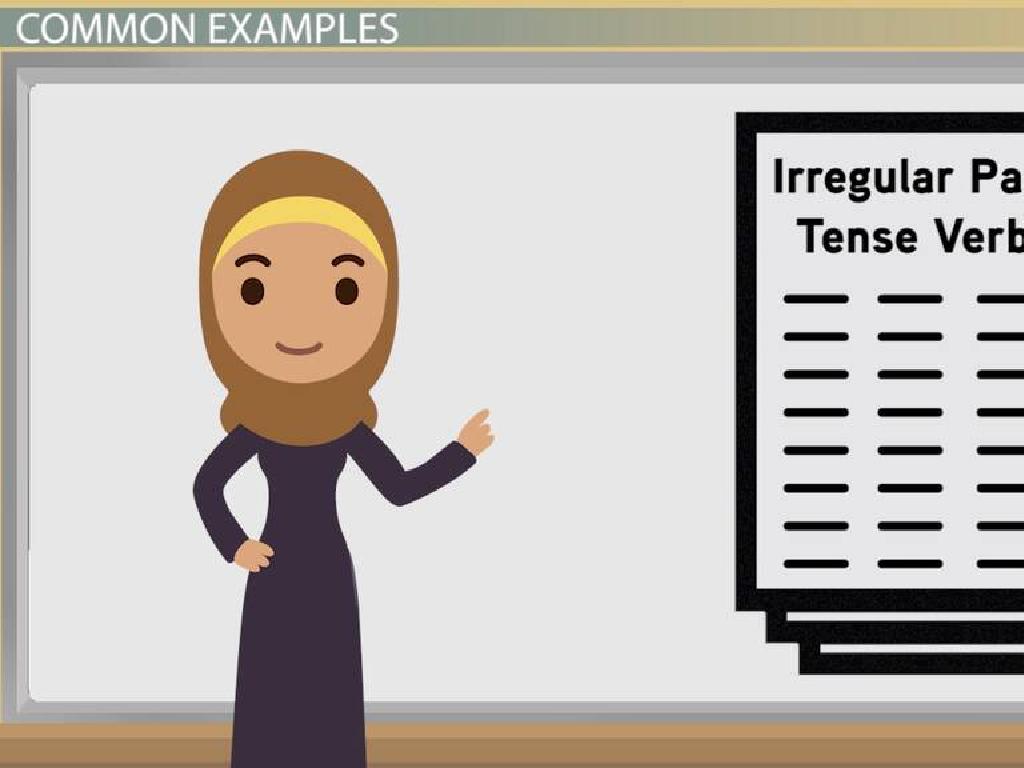Inequalities With Decimal Division
Subject: Math
Grade: Sixth grade
Topic: Multiply And Divide Decimals
Please LOG IN to download the presentation. Access is available to registered users only.
View More Content
Introduction to Inequalities with Decimal Division
– What are inequalities?
– Inequalities show how numbers are not equal and can be less than or greater than each other.
– Inequalities in daily life
– Comparing prices, scores, or measurements often involves inequalities.
– Linking to decimals
– Understanding how to multiply and divide decimals is key to solving inequalities.
– Applying inequalities
– Practice with real-world problems like budgeting or measuring.
|
Begin the lesson by explaining the concept of inequalities, emphasizing that they are statements about the relative size of two values. Use relatable examples such as comparing heights, prices, or test scores to illustrate inequalities in everyday life. Draw connections to prior knowledge by reminding students how multiplying and dividing decimals works, as these operations are fundamental in solving decimal inequalities. Encourage students to think of situations where they might need to use inequalities, such as staying within a budget or comparing distances. This will help them understand the practical applications of the concept.
Understanding Decimal Division
– Reviewing division fundamentals
– Division is splitting into equal parts or groups.
– Introducing division with decimals
– Similar to whole numbers, but includes decimals.
– Decimal point placement
– Keep track of the decimal in the quotient.
– Practice decimal division problems
|
Begin with a quick recap of division basics to ensure students are comfortable with the concept of dividing numbers into equal parts. Then, introduce the concept of decimal division, highlighting that the process is similar to dividing whole numbers, but they must now account for decimal points. Emphasize the importance of decimal point placement in the quotient, as it can change the value of the answer significantly. Provide several examples on the board and work through them together. Encourage students to solve practice problems and to watch the decimal point carefully. This will prepare them for more complex problems involving inequalities with decimal division.
Understanding Inequalities with Decimal Division
– Symbols: > and ‘ means more than, ‘<' means less than
– Symbols: e and d
– 'e' means at least, 'd' means at most
– Meaning of inequality symbols
– They compare the value of two numbers or expressions
– Applying symbols to decimals
– Use symbols to show the relationship after dividing decimals
|
This slide introduces students to the fundamental symbols used in mathematical inequalities and their meanings, specifically focusing on their application in decimal division. Begin by explaining the ‘greater than’ (>) and ‘less than’ (<) symbols, followed by 'greater than or equal to' (e) and 'less than or equal to' (d). Emphasize that these symbols are used to compare two quantities. Provide examples of inequalities with decimal division to illustrate how these symbols are used to represent the relationship between the results of dividing decimals. Encourage students to practice by creating their own examples of decimal division inequalities.
Writing Inequalities with Decimals
– Understanding inequality symbols
– Symbols: >, $5.75 after buying a snack.
– Practice with real-world problems
|
This slide introduces students to the concept of writing inequalities, particularly when dealing with decimal division. Start by explaining the inequality symbols and what they represent. Then, demonstrate how to use decimal division within the context of inequalities, ensuring to clarify the process of dividing decimals. Provide a relatable scenario for students to write an inequality, such as budgeting a certain amount of money for expenses. Encourage students to practice with additional real-world problems to solidify their understanding. The goal is for students to become comfortable with expressing mathematical relationships using inequalities and to apply this knowledge to everyday situations.
Solving Inequalities with Decimal Division
– Follow a step-by-step guide
– Start by dividing both sides by the same number, keeping the inequality direction in mind.
– Check your solution methodically
– Substitute the solution back into the original inequality to verify.
– Learn common mistakes to avoid
– Don’t forget to flip the inequality sign when multiplying or dividing by a negative.
– Practice with example problems
– Use sample inequalities to apply what you’ve learned and reinforce the steps.
|
This slide is aimed at teaching students a systematic approach to solving inequalities involving decimal division. Begin by explaining the step-by-step process, emphasizing the importance of maintaining the correct direction of the inequality sign. Highlight the necessity of checking solutions by plugging them back into the original inequality. Address common errors, such as neglecting to reverse the inequality when dividing by a negative number. Conclude with practice problems to solidify understanding. Encourage students to work through these problems in pairs or groups to facilitate peer learning.
Real-World Applications of Decimal Division Inequalities
– Budgeting using inequalities
– Set a budget limit and use inequalities to stay within it.
– Compare prices with decimal division
– Divide price by quantity to see which product offers better value.
– Make informed financial choices
– Use inequalities to decide if a purchase keeps you under budget.
– Understanding ‘greater than’ & ‘less than’
|
This slide aims to show students how decimal division and inequalities are used in everyday life, especially in financial decision-making. When budgeting, one must ensure that the total expenses are less than the income, which can be expressed as an inequality. Comparing prices involves dividing the price by the quantity to determine the cost per unit, helping to identify the best deal. Making smart financial decisions requires understanding these concepts to avoid overspending. Encourage students to think of examples from their family budget or hypothetical scenarios where they have to choose between different priced items, using inequalities to guide their decisions.
Class Activity: Inequality Challenge
– Divide into teams to solve problems
– Present solutions and reasoning
– Explain how you used decimal division to determine the inequality
– Discuss different problem-solving approaches
– Share unique strategies used by each team
– Reflect on the learning experience
– How did the activity help you understand inequalities better?
|
This activity is designed to foster teamwork and collaborative problem-solving among students. Each team will work on a set of inequality problems involving decimal division, encouraging them to apply their knowledge in a practical context. After solving the problems, teams will present their solutions to the class, explaining the reasoning behind their answers. This will help students articulate their thought processes and learn from each other. The group discussion will allow students to explore different approaches to the same problem, highlighting the variety of methods that can be used to solve inequalities. As a teacher, facilitate the discussion by asking probing questions and guiding students to reflect on their learning. Provide support as needed during the problem-solving phase and ensure that each student is engaged and contributing to their team’s efforts.
Wrapping Up: Inequalities & Decimal Division
– Review key concepts from today
– Homework: Solve practice problems
– Complete the assigned problem set to reinforce today’s lesson
– Upcoming class: Complex inequalities
– Prepare for tackling more challenging inequality problems next class
– Keep practicing for mastery
|
As we conclude today’s lesson on inequalities with decimal division, it’s important to recap the main points to reinforce student understanding. For homework, students are assigned a set of practice problems that will help solidify their grasp of the concepts covered. Looking ahead, the next class will delve into more complex inequalities, building on the foundation laid today. Encourage students to practice regularly, as mastery comes with consistent effort. The homework will also serve as a good indicator of their understanding and areas where they might need additional help.

/civil_war_history_materials.jpg)




